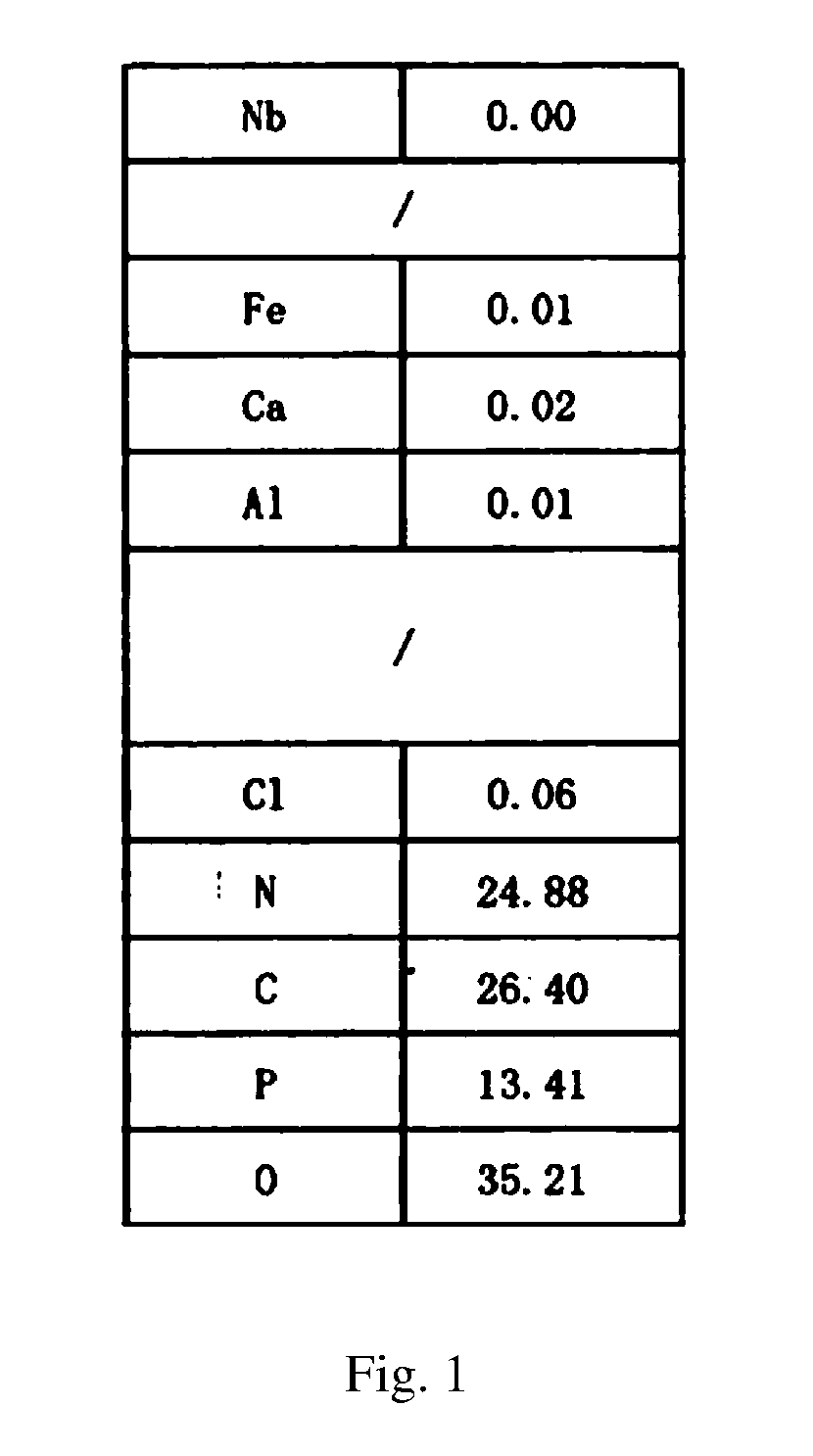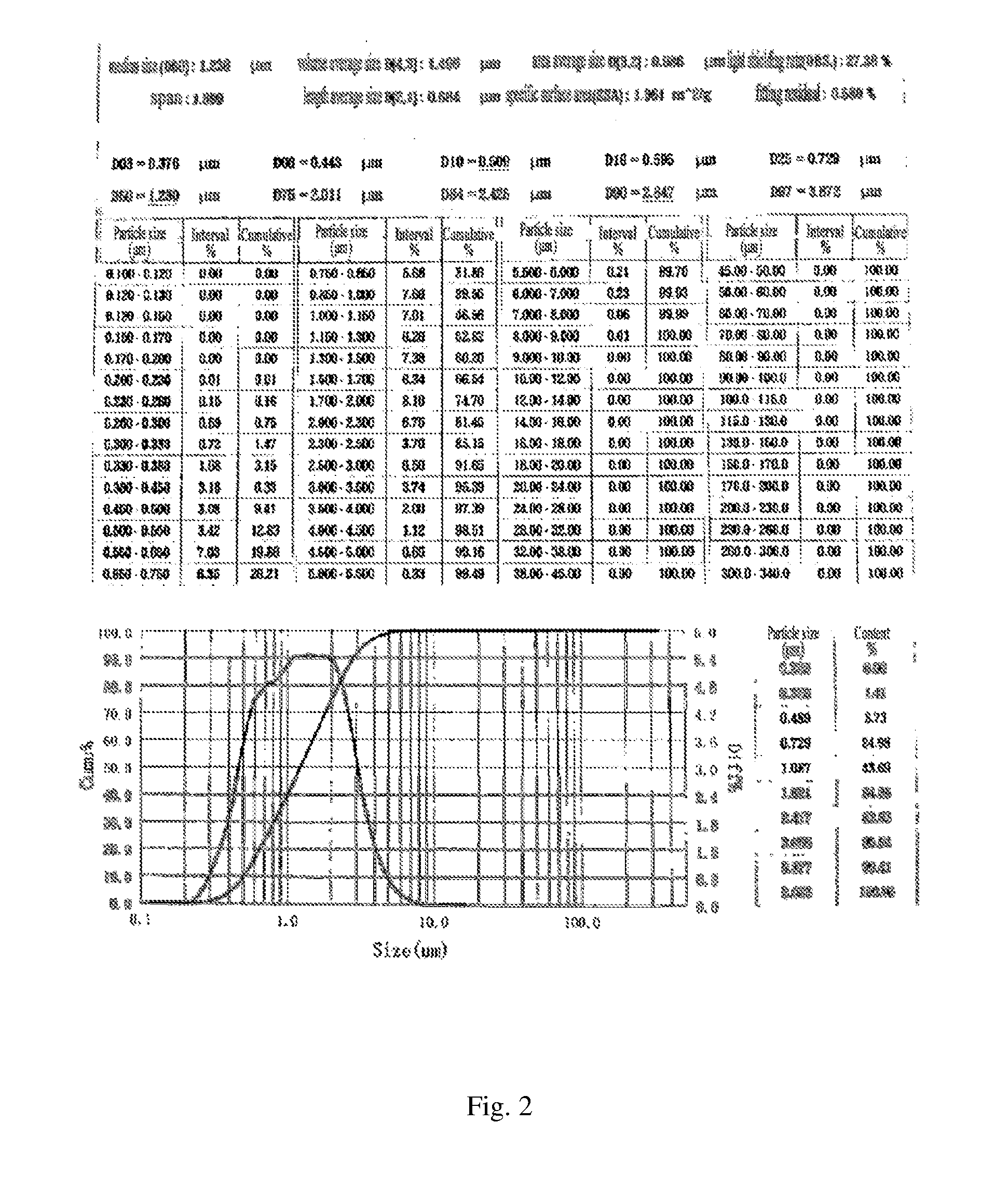Phosphorus-nitrogen intumescent flame retardant, synthesis method therefor and use thereof
a flame retardant and phosphorus-nitrogen technology, applied in the field of phosphorus-nitrogen-based intumescent flame retardant, and a synthetic method, can solve the problems of remarkably adverse effects on mechanical and physical properties of base materials, fire safety, and more severe fire hazards
- Summary
- Abstract
- Description
- Claims
- Application Information
AI Technical Summary
Benefits of technology
Problems solved by technology
Method used
Image
Examples
example 1
[0063]In a 250-milliliter beaker, 10 grams of polyphosphoric acid were added, then 10 grams of a nitrogen-containing foaming agent (melamine) were added in batches, followed by uniform stirring. An appropriate amount of water was added to initiate reaction, and sufficient reaction was allowed. 6 grams of a charring agent, such as cellulose, were further added to continue the reaction; and then a hydroxy-containing polyfuctional crosslinking agent, such as 10 grams of hydroquinone and 5 grams of a polyol, was added. After the reaction was complete, the product was cooled to room temperature. An amine such as an aqueous methylamine solution was then added at a temperature of 15-40° C. for neutralization until pH was 5-8. Subsequently filtration was performed and filter residue was dried to obtain a flame retardant main body. The resultant flame retardant main body, melamine phosphate, and pentaerythritol were mixed at a ratio of (1-3:0.5-1.5:0.2-1.2) and were uniformly pulverized to o...
example 2
[0070]According to the method described in Example 1, the amount of polyphosphoric acid used was kept unchanged, but the ratio of polyphosphoric acid to the second charring agent (pentaerythritol) therein was changed to the values listed in Table 1, and the experiment described above was performed. The experimental results were given in Table 1.
TABLE 1Experimental results at different weight ratios of the phosphorizationagent to the hydroxy-containing polyfuctional crosslinking agentPhosphorizationFlameFlameagent:penta-retardingpropa-CombustionPaint striperythritoltimegationweight losslimiting(weight ratio)(minute)rate(gram)oxygen index 1:0.5750%12.524.31:1842%1126.51:2939%1028.91:37.545%11.825.01:4753%1324.5
[0071]It can be seen from the above table that all ratios of the phosphorization agent to the crosslinking agent within 11 may obtain satisfactory results, and the result at 1:2 was particularly notable.
example 3
The Flame-Retardant Effect of the Flame Retardant Main Body
[0072]6 grams of the flame retardant main body in Example 1 were added to 20 grams of a polyurethane paint, followed by uniform mixing, and they were coated onto a five-ply board base material By means of GB12441-2005, a national standard for fireproof coatings (there was no standard for flame-retardant paints at present), the properties of the flame-retardant paint after being coated onto a wood five-ply board base material were as follows:
[0073]flame retarding time of 7 minutes (big panel method);
[0074]flame propagation rate of 50% (tunnel method);
[0075]carbonization volume, weight loss of 12.5 grams (cabinet method);
[0076]paint strip limiting oxygen index (LOI) of 24.5%.
PUM
| Property | Measurement | Unit |
|---|---|---|
| LOI | aaaaa | aaaaa |
| oxygen index LOI | aaaaa | aaaaa |
| limiting oxygen index LOI | aaaaa | aaaaa |
Abstract
Description
Claims
Application Information
 Login to View More
Login to View More - R&D
- Intellectual Property
- Life Sciences
- Materials
- Tech Scout
- Unparalleled Data Quality
- Higher Quality Content
- 60% Fewer Hallucinations
Browse by: Latest US Patents, China's latest patents, Technical Efficacy Thesaurus, Application Domain, Technology Topic, Popular Technical Reports.
© 2025 PatSnap. All rights reserved.Legal|Privacy policy|Modern Slavery Act Transparency Statement|Sitemap|About US| Contact US: help@patsnap.com



